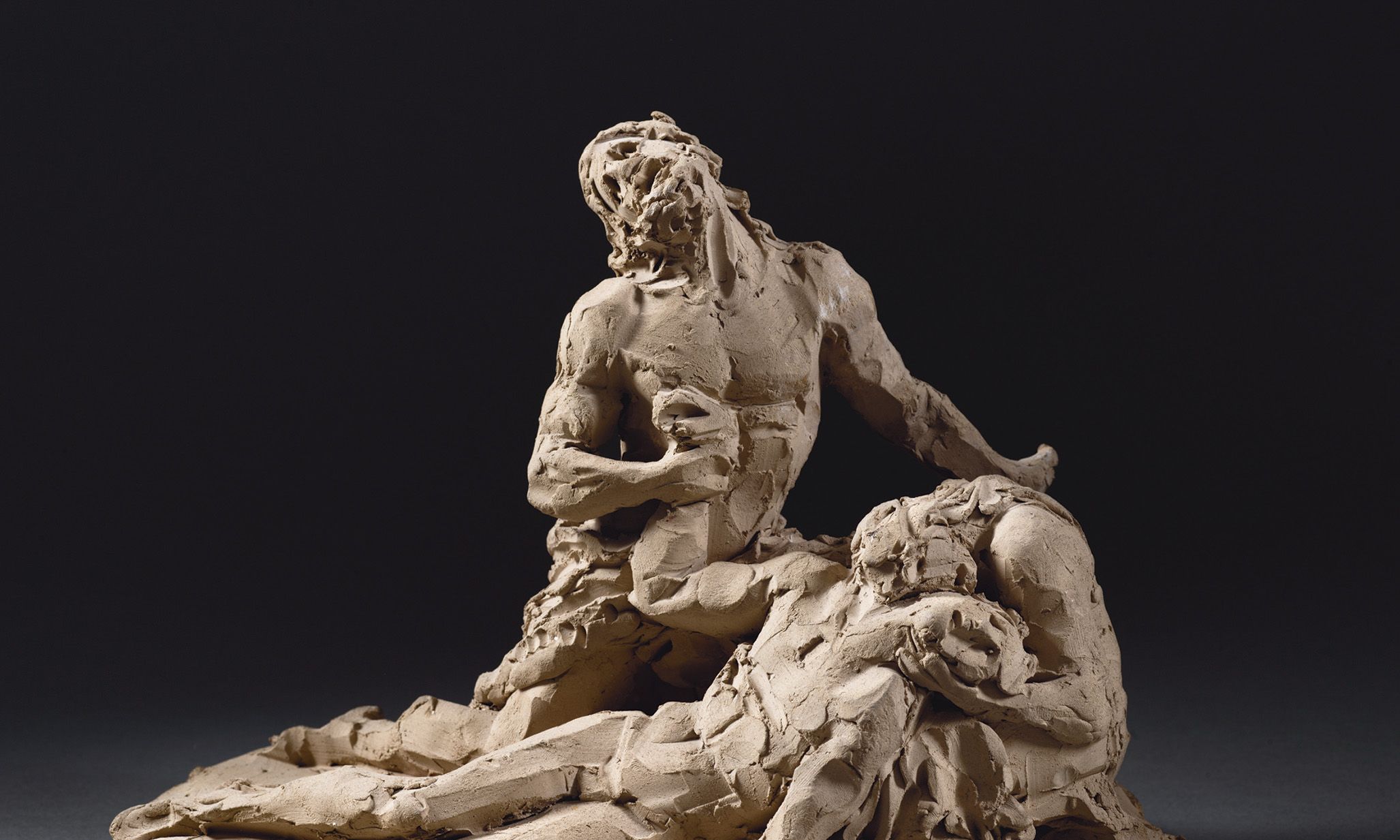Antonio Canova’s Adam and Eve Mourning the Dead Abel (around 1818-22), held by the Museo Gypsotheca Antonio Canova, Possagno Luigi Spina
Sometimes modern exhibitions aim to deliver what the public already know and like, rather than seeking originality in the subject, content and interpretation. This is not the case here.
Following on from Bernini: Sculpting in Clay in 2012 at New York’s Metropolitan Museum of Art, the exhibition and catalogue Canova: Sketching in Clay—co-organised by the National Gallery of Art, Washington (until 9 October) and the Art Institute of Chicago (19 November-18 March 2024)—focuses on the terracotta figures of another great name of Western art, the Venetian-born sculptor Antonio Canova (1757-1822).
Best known for his sculptures in marble—the tomb of Maria Christina of Austria (1805, Augustinian Church, Vienna), Pauline Bonaparte as Venus Victorious (1808, Galleria Borghese, Rome), The Three Graces (1817, Victoria and Albert Museum, London), among many others—the majority of Canova’s terracotta pieces are in public museums (mostly in Italy). From the 1950s to the 1990s, many of these terracotta models were lent to exhibitions, so they are well known to the most important scholars of early-19th-century art—notably Elena Bassi, Emilio Lavagnino, Anthony M. Clark, Hugh Honour and Giuseppe Pavanello. Yet in concentrating on an impressive selection of around 40 of these incredible small-scale masterpieces, the curators C.D. Dickerson and Emerson Bowyer, with scientific support from Anthony Sigel and Elyse Nelson, are able to present them in a more coherent and accurate way, both within the exhibition and via this elegant and well conceived publication.
Canova’s terracotta model for The Three Graces (1812). The marble version is at the Victoria and Albert Museum, London Luigi Spina
Another title for the project could have been “Canova: Thinking in Clay”. In Canova’s art practice, the meditation on a subject passed through a kind of impulsive, almost emotional phase of drawing and modelling, which carried from his mind to his hands the visual forms of his imagination. It was a sort of “stream of consciousness”, but more rational: a private act of creation (and of liberty) that, although not peculiar to Canova, is highly characteristic of his artistic method.
Dickerson and Bowyer’s essay, “A Passion for Clay”, is primarily a historical and cultural contextualisation of this method, first described by Hugh Honour in the Burlington Magazine in 1972. But in their analysis, the authors update Honour’s exposition and even offer new perspectives, mostly around the idea of a stylistic and aesthetic link between Canova’s technique in modelling and that of his sculpting: a matter of great importance for a better comprehension of the sculptor’s fluid creative process.
In fact, our understanding of Canova’s production in terracotta, plaster, wax and ceramic is limited in comparison to his work in marble. However, as the curators clearly affirm, we must acknowledge that, once in Rome, the young Canova changed not only his style but also his approach to the practice of modelling. As the great scholar Alvar González-Palacios has observed, Canova could only become Canova in Rome. Even his marbles continue to raise questions, particularly regarding surface and his use of light.
I am not fully convinced by the idea that the artist’s technique of working with marble could be derived from his terracotta modelling habits. I am more inclined to believe that it is the other way round, as suggested by Sigel, whose very interesting analysis gives us an unprecedented record of terracotta typologies and a better comprehension of the sculptor’s working method, but also a kind of map for signs, procedures, clues and even fingerprints that reveal fully the general appearance and form of Canova’s clay models, and will certainly help us attribute new findings in the future.
The final contribution to the book, Nelson’s essay “Cherished Gifts in Clay”, is a short but fascinating focus on
Canova’s attitude of never profiting from his terracotta pieces: in fact, he always kept his little models for reference, or gave them as precious gifts to a select group of friends as a mark of esteem, sometimes with the finest engravings representing his most celebrated works.
While scholars await the arrival of a complete catalogue raisonné of Canova’s works, the absence here of a full list of his extant terracotta works with technical details and a general bibliography is a missed opportunity. Even so, in the world of art historical study, where the weighty exhibition catalogue is increasingly used as a substitute for standalone volumes, this beautifully illustrated book—with Luigi Spina’s photographs showing full views and details of the works discussed—is an invaluable addition to the field and a fitting memento of the bicentenary of Canova’s death.
• C.D. Dickerson and Emerson Bowyer, with contributions by Anthony Sigel and Elyse Nelson, Canova: Sketching in Clay, National Gallery of Art, Washington/Art Institute of Chicago/Yale, 280pp, 190 colour illustrations, $65/£50 (hb), published 6 June
• Alessio Costarelli is a research fellow in art history at the University of Messina, Italy, specialising in 19th-century Italian sculpture and architecture, with a particular focus on the art of Antonio Canova

